Your cart is currently empty!
Backlink analysis is crucial for assessing link quality, identifying harmful backlinks, and finding link-building opportunities.
It helps evaluate the quantity and quality of backlinks, ensuring they contribute positively to SEO. Key components include total backlinks, anchor text distribution, and referring domains’ authority.
Competitor analysis also reveals strategic insights, while tools like Backlink Indexing Tool ensure proper indexing of acquired links, maximizing their impact.
Tracking backlink changes and addressing harmful links are vital for maintaining a strong link profile and improving domain authority over time.
What is backlink analysis?
Backlink analysis involves examining the external links pointing to a website to assess their impact on search engine rankings and online authority.
This process includes reviewing the number of backlinks, their quality, the authority and relevance of the linking sites, and the anchor text used in the links.
It also distinguishes between follow links, which pass SEO value, and nofollow links, which don’t.
The analysis considers the unique referring domains, link velocity, the rate at which new backlinks are acquired, and the geographical and industry relevance of the linking domains.
Additionally, the placement of the links on the page is important for understanding their effectiveness.
Backlink analysis is essential for SEO strategies, competitive insights, and optimizing link-building opportunities.
How does backlink analysis differ from backlink indexing?
Backlink analysis involves evaluating the structure and quality of the links a website has acquired, while backlink indexing ensures that these links are recognized and counted by search engines like Google.
At Backlink Indexing Tool, we specialize in backlink indexing, ensuring that your backlinks are properly crawled and indexed to enhance their SEO value.
Both processes are necessary for a complete link-building strategy.
Why is backlink analysis important for SEO?
Backlink analysis plays a crucial role in SEO by:
- Identifying high-quality link-building opportunities
- Detecting harmful or toxic backlinks
- Providing insights into competitor link strategies
- Informing content strategies to attract more backlinks
- Measuring the success of link-building campaigns and their impact on search rankings
How do you measure the quantity and quality of backlinks?
Backlink measurement involves assessing both quantity and quality. While the sheer number of backlinks is important, quality links from authoritative, relevant domains can have a much larger impact on SEO.
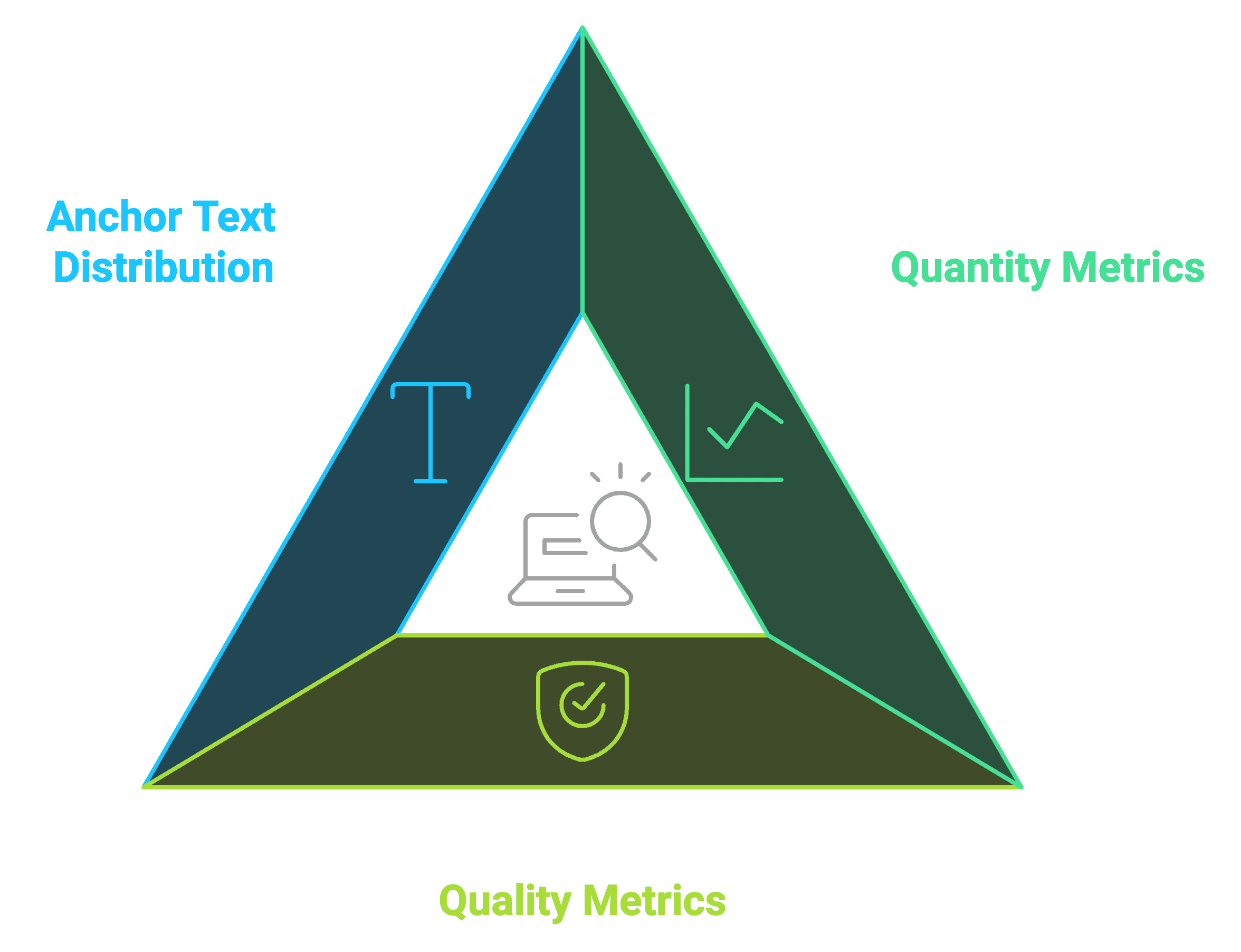
What metrics are used to assess backlink quantity?
The number of backlinks and their diversity is important. Key metrics for measuring backlink quantity include:
- Total number of backlinks: The overall count of all links pointing to a website from external sources.
- Referring domains: The number of unique websites or domains linking to a site.
- Referring IPs: The number of unique IP addresses from which the backlinks originate, indicating the diversity of link sources.
- Backlinks per referring domain: The average number of backlinks each domain provides, helping assess whether links are concentrated from a few sources or spread across many.
- New vs lost backlinks: Tracking the number of newly acquired backlinks versus those that have been lost over a given period.
- Linking pages: The number of individual pages from external websites that contain links to your site.
- Follow vs nofollow links: The proportion of backlinks that pass link equity (follow) versus those that don’t (nofollow).
How can you determine the quality of individual backlinks?
To determine the quality of individual backlinks, you can assess the following factors:
- Domain authority: The overall authority of the linking domain, often measured by tools like Moz’s Domain Authority (DA) or Ahrefs’ Domain Rating (DR). High-authority domains generally provide more valuable backlinks.
- Page authority: The authority of the specific page where the backlink is located. A link from a high-authority page within a site is more valuable than one from a lower-ranking page.
- Relevance: The contextual relevance between the linking website and your own. Backlinks from sites within the same industry or niche carry more weight for search engines.
- Anchor text: The anchor text used for the backlink. Natural, varied, and relevant anchor text is preferable to over-optimized or irrelevant terms.
- Traffic: The traffic volume of the linking site or page. Backlinks from websites with high traffic can drive direct visitors and boost search engine rankings.
- Link placement: Where the link appears on the page (e.g., within the main content, sidebar, or footer). Links embedded within relevant content are typically more valuable than those placed in less visible or irrelevant sections.
- Follow vs nofollow: Whether the backlink is a “follow” or “nofollow” link. Follow links pass SEO value to your site, while nofollow links don’t, but nofollow links can still offer indirect benefits like referral traffic.
- Link freshness: Newer links from recently updated or highly active pages are often more beneficial than those from outdated or inactive pages.
- Spam score: The likelihood that the linking site is considered spammy or of low quality. Sites with high spam scores may provide harmful backlinks. Tools like Moz offer spam score indicators to assess this risk.
Why is the ratio of backlinks to referring domains significant?
The ratio of backlinks to referring domains is crucial for assessing link quality and diversity.
A high number of backlinks from a few domains can signal low-quality practices, like link farming, while a balanced ratio with diverse domains suggests a natural, trustworthy link profile.
Search engines favor unique, authoritative domains over repeated links from the same site, as each new referring domain has a stronger impact on SEO.
In addition to that, a high number of unique domains signals broader industry recognition, enhancing authority and ranking potential while reducing the risk of penalties associated with unnatural link patterns.
How does anchor text distribution impact backlink quality?
Over-optimization is an issue, and a natural anchor text profile helps avoid it by promoting:
- Brand mentions
- URL variations
- Generic terms
- Relevant keywords — an unbalanced anchor text profile, especially one with excessive keyword-rich anchors, may lead to penalties from search engines.
What tools are available for conducting backlink analysis?
There are many tools available to analyze backlinks, each with different features and pricing models.
How do paid backlink analysis tools compare to free options?
Paid tools like Ahrefs, Moz, and SEMrush provide comprehensive backlink data, including:
- Advanced metrics: Domain authority, link velocity, and competitor analysis.
- Historical data: Tracking link performance over time.
- Competitive insights: In-depth data on competitors’ backlink strategies.
Free tools such as Google Search Console offer basic insights:
- Basic backlink data: A list of linking sites and anchor texts.
- Limited features: No advanced reporting or competitor analysis capabilities.
What features should you look for in a backlink analysis tool?
With increasing choices of tools use specific features to differentiate which one to use:
- Comprehensive backlink database
- Customizable reporting options
- Competitive analysis capabilities
- Link quality metrics
- API access and integration with other SEO tools
- Toxic link detection
How can Backlink Indexing Tool complement other backlink analysis tools?
While backlink analysis tools offer valuable insights, they do not ensure that backlinks are indexed by search engines. Backlink Indexing Tool fills this gap by:
- Accelerating the indexing process for newly acquired backlinks.
- Verifying the indexing status of your backlinks.
- Providing detailed reports on which links are indexed.
- Offering automatic refunds for unindexed backlinks.
How do you perform a competitor backlink analysis?
Competitor backlink analysis provides a strategic advantage by uncovering where rivals gain link authority, allowing you to pinpoint areas for improvement and growth.
Through this, you can explore patterns and relationships within your industry, setting the stage for more detailed insights into effective link-building opportunities and SEO tactics.
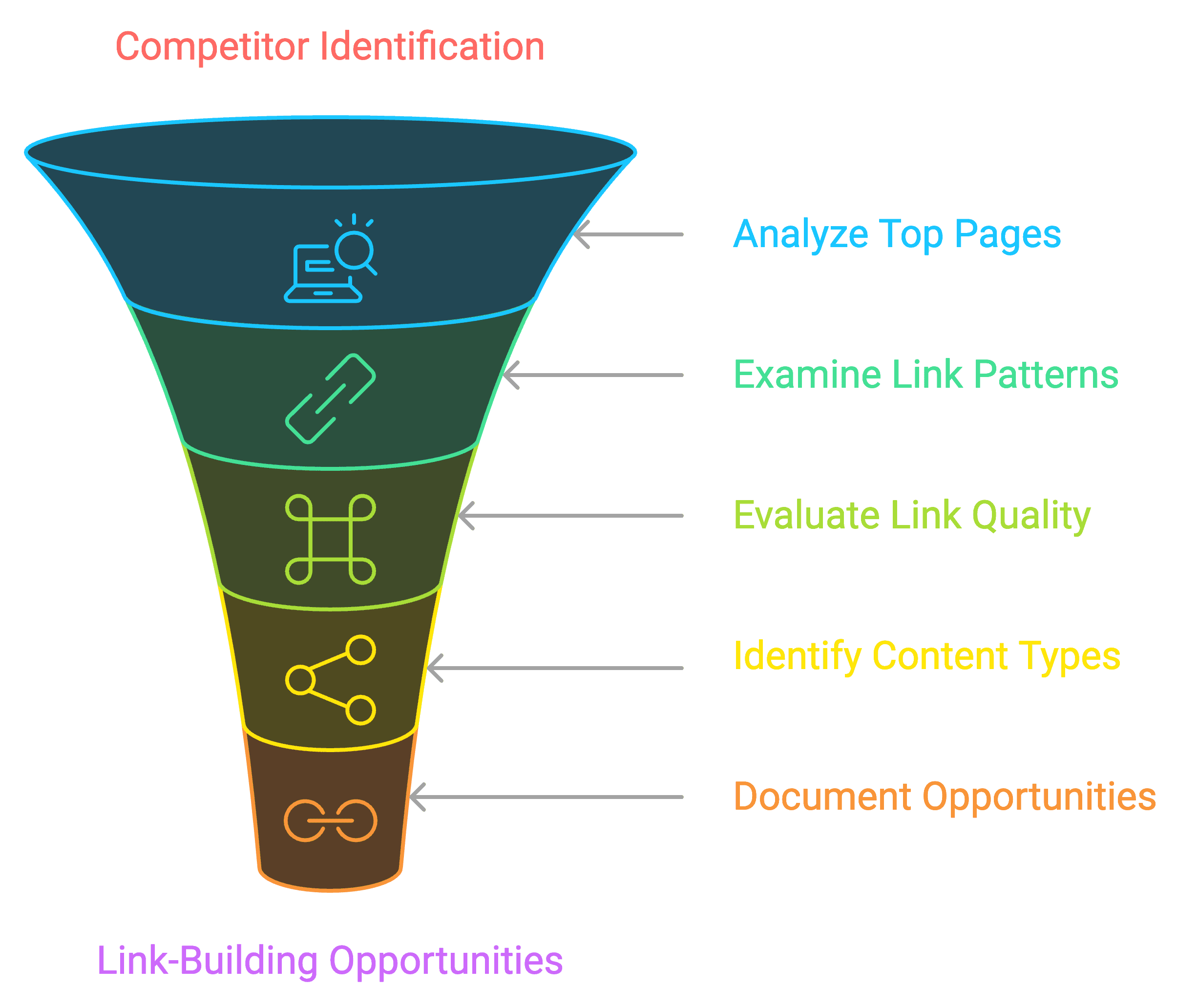
Why is analyzing competitors’ backlinks valuable for your SEO strategy?
Competitor backlink analysis reveals where your competitors are gaining link authority and helps you:
- Identify new link-building opportunities.
- Understand linking patterns in your industry.
- Benchmark your own link-building efforts.
What steps are involved in conducting a thorough competitor backlink audit?
Conducting a thorough competitor backlink audit involves several key steps:
- Identify competitors in your industry.
- Analyze their top-performing pages for backlink acquisition.
- Examine link acquisition patterns to identify gaps.
- Evaluate the quality of links pointing to competitors.
- Identify content types that attract links.
- Document link-building opportunities for outreach.
How can you identify link-building opportunities from competitor analysis?
Here are effective ways to uncover link-building opportunities through competitor analysis:
- Industry resource pages linking to multiple competitors.
- Guest post opportunities on authoritative sites.
- Broken links on competitors’ pages.
- Unlinked brand mentions where you can request a link.
What are the best practices for tracking backlink changes over time?
Effective tracking of backlink changes requires a structured approach, allowing you to stay informed of shifts that can influence your website’s performance.
Regular evaluation ensures timely responses to fluctuations and sets the foundation for deeper analysis of key factors that shape link quality, authority, and overall SEO outcomes.
How often should you monitor backlink fluctuations?
You should monitor backlink fluctuations on a regular basis, typically weekly or monthly, depending on the scale of your SEO efforts and the competitiveness of your industry.
Regular monitoring helps track new and lost backlinks, analyze competitor strategies, and identify potential issues that may affect rankings.
For larger campaigns or competitive niches, more frequent checks (weekly) may be necessary, while smaller sites may be fine with monthly reviews.
What metrics should you focus on when tracking newly acquired and lost backlinks?
There are multiple indicators that can influence lost or new found backlinks. Key metrics include:
- Number of new and lost backlinks
- Changes in referring domain authority
- Link diversity changes
- Anchor text variations
How can you determine the impact of lost backlinks on your SEO performance?
To determine the impact of lost backlinks on your SEO performance, follow these steps:
- Monitor traffic changes: Use tools like Google Analytics to observe any drops in organic traffic after losing backlinks. Significant drops may indicate a negative impact.
- Check keyword rankings: Use rank tracking tools to see if there’s a decline in rankings for important keywords. Lost backlinks from high-authority sites can affect rankings.
- Evaluate lost backlink quality: Analyze the authority and relevance of the lost backlinks. Losing high-quality backlinks often has a more noticeable effect on SEO.
- Assess referring domain authority: If the lost backlink came from a high-authority domain, the impact on your site’s authority and ranking potential might be greater.
- Review anchor text diversity: Losing backlinks with targeted anchor text may weaken keyword associations, affecting ranking for those terms.
- Compare competitor performance: Check whether competitors gained links during the same period, potentially leading to ranking shifts.
- Use backlink monitoring tools: Tools like Ahrefs or SEMrush can help you track backlink losses and correlate them with ranking and traffic changes over time.
How does backlink indexing complement backlink analysis?
Backlink indexing plays a crucial role in ensuring that the efforts invested in link-building are fully realized.
By bridging the gap between acquiring links and having them recognized, this process sets the stage for analyzing and enhancing their effectiveness, ensuring maximum SEO benefits from each link obtained.
Why is ensuring backlink indexation crucial for effective analysis?
Ensuring backlink indexation is essential for accurate analysis for several reasons:
- Accurate link profile: Only indexed backlinks contribute to your site’s SEO value. Without indexation, you might be analyzing an incomplete or misleading backlink profile.
- Impact on rankings: Search engines like Google only recognize indexed backlinks when calculating your site’s authority and rankings. Non-indexed links have no direct impact on search performance.
- Proper evaluation of link-building efforts: If backlinks are not indexed, it’s difficult to gauge the success of your link-building campaigns or the quality of the links acquired.
- Competitor comparison: Indexed backlinks are necessary to accurately compare your backlink profile against competitors, ensuring fair analysis of strategies and ranking factors.
- Visibility in search engines: Indexed backlinks contribute to improving your site’s visibility in search results. Non-indexed links offer no SEO benefits, skewing your analysis and strategy.
How can tools like Backlink Indexing Tool enhance the value of your backlink analysis?
Tools like Backlink Indexing Tool can significantly boost the effectiveness of your backlink analysis in the following ways:
- Ensuring fast indexing of newly acquired backlinks.
- Providing status reports on which links have been indexed.
- Enhancing the effectiveness of your link-building campaigns.
What is the process for using Backlink Indexing Tool to improve backlink visibility?
The process for using Backlink Indexing Tool to improve backlink visibility involves the following steps:
- Link submission: Log into the Backlink Indexing Tool dashboard and submit your list of backlinks. You can upload up to 10,000 links in one submission, making it suitable for large-scale campaigns.
- Processing: The tool begins working to encourage Google to crawl and index the submitted links using secure methods designed to avoid penalties and maintain compliance with Google’s guidelines.
- Results analysis: After a 14-day processing period, access a comprehensive report on the indexing status of each link. Unindexed links automatically receive credit refunds.
- API integration: If needed, use the RESTful API to automate link submissions, check indexing status, and retrieve reports, streamlining the workflow for ongoing backlink campaigns.
What are the best practices for tracking backlink changes over time?
Tracking backlink changes is vital for maintaining an up-to-date and effective SEO strategy. By monitoring the acquisition and loss of backlinks, you can assess the performance of your link-building efforts and address any potential issues before they affect your rankings.
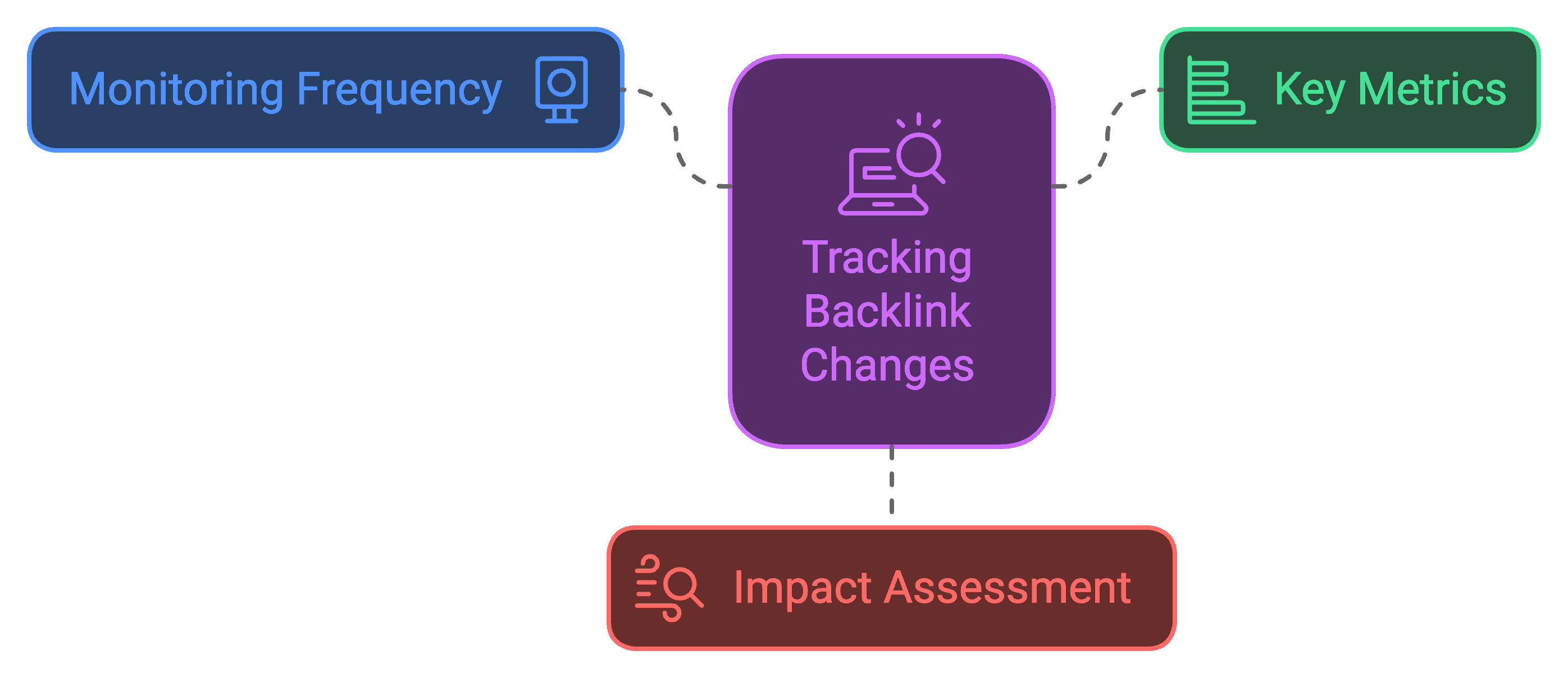
How often should you monitor backlink fluctuations?
The frequency of backlink monitoring depends on the size of your website and the intensity of your link-building efforts.
For most websites, monthly or quarterly reviews are sufficient. However, sites engaged in aggressive SEO campaigns or those in highly competitive niches may require weekly tracking.
Regular monitoring allows you to detect any issues, such as lost high-quality links, and take timely action.
What metrics should you focus on when tracking newly acquired and lost backlinks?
When tracking backlink changes, key metrics to monitor include:
- New backlinks acquired: Indicates the success of ongoing link-building efforts.
- Lost backlinks: Highlights potential issues like link removals or website changes.
- Domain authority of new and lost links: Ensures that high-quality links are being gained and maintained.
- Link diversity: A varied profile of links from different domains indicates a natural link-building process.
How can you determine the impact of lost backlinks on your SEO performance?
To assess the impact of lost backlinks, focus on the following:
- Keyword ranking drops: A decline in rankings may be tied to the loss of valuable backlinks.
- Organic traffic reduction: Reduced traffic can signal the loss of important links that drove visibility.
- Referral traffic changes: Track whether specific backlink referrals have decreased, affecting overall site traffic.
By understanding which lost links have the most significant impact, you can take steps to regain them or replace them with higher-quality links.
How do you identify potential link-building opportunities through backlink analysis?
Backlink analysis is an essential tool for uncovering new link-building opportunities. By reviewing your own backlink profile and those of your competitors, you can identify gaps and prospects to strengthen your link profile.
What strategies can you use to find new link prospects?
To discover new link-building prospects, consider the following strategies:
- Competitor backlink analysis: Identify where competitors are gaining backlinks and reach out to the same sources.
- Broken link building: Find broken links on authoritative sites and offer your content as a replacement.
- Guest posting: Submit high-quality content to relevant industry blogs or sites.
- Target resource pages: Request inclusion on trusted resource or industry-specific pages that list relevant information.
How can you leverage your existing backlinks for further opportunities?
Here are effective ways to leverage your existing backlinks to uncover additional link-building opportunities:
- Outreach to linking sites: Suggest additional relevant content or pages for linking.
- Updating linked content: Keep high-performing linked content fresh, then share the updates with sites already linking to you.
- Relationship building: Strengthen ties with websites that frequently link to your content, encouraging future links to your updated or new resources.
Why is understanding your backlink acquisition rate important for link-building?
Backlink acquisition rate refers to how quickly you are gaining new backlinks over time.
A steady and natural acquisition rate is crucial for SEO, as a sudden surge of links can appear unnatural and lead to penalties.
Monitoring this rate helps you ensure that your link-building efforts are sustainable and align with best practices.
What role does backlink analysis play in identifying and mitigating negative SEO?
Negative SEO, which involves harmful backlinks being directed at your website, can damage your rankings. Through consistent backlink analysis, you can detect and neutralize toxic or spammy links that harm your site’s SEO.
How can you detect potentially harmful or toxic backlinks?
Here are key methods to identify potentially harmful or toxic backlinks:
- Links from low-quality or spammy sites: Irrelevant sites with little authority can negatively impact your rankings.
- Over-optimized anchor texts: Repeated exact-match keywords in anchor text may indicate manipulation.
- Sudden influx of low-quality links: A rapid increase in suspicious links could signal negative SEO attempts.
- Links from penalized sites: Backlinks from sites that have been penalized or de-indexed by Google can hurt your site’s performance.
What steps should you take if you discover spammy or low-quality backlinks?
Here are key steps to take if you identify spammy or low-quality backlinks pointing to your site:
- Contact webmasters: Request the removal of harmful links from low-quality websites.
- Disavow toxic links: Use Google’s disavow tool to exclude specific backlinks from your profile.
- Regular monitoring: Ensure ongoing monitoring of your backlink profile to identify and address new toxic links promptly.
How does Backlink Indexing Tool help in managing the impact of new backlinks?
Backlink Indexing Tool supports effective management of new backlinks in several impactful ways:
- Accelerating backlink indexation: It ensures that newly acquired backlinks are quickly recognized and indexed by search engines.
- Monitoring indexing status: The tool provides detailed reports on the indexing status of each submitted backlink.
- Improving ranking potential: By ensuring new backlinks are indexed promptly, the tool helps boost your site’s authority and improves ranking potential.
- Automatic credit refunds: If a backlink fails to get indexed, the tool refunds credits automatically, ensuring that you only pay for successful indexation.
- Detailed analysis and reporting: It offers comprehensive reports that allow you to assess the success of your link-building campaigns.
How do you report and visualize backlink data effectively?
Clear reporting and data visualization allow you to communicate backlink performance to stakeholders and make data-driven decisions to improve SEO outcomes.
What key metrics should be included in a comprehensive backlink analysis report?
A comprehensive backlink analysis report should cover:
- Total number of backlinks
- Number of referring domains
- Domain authority of referring domains
- Dofollow vs. nofollow link ratio
- Anchor text distribution
- Top linked pages
- Geographical distribution of backlinks
- Backlink acquisition rates over time
How can data visualization enhance backlink analysis insights?
Data visualization simplifies complex backlink data, making it easier to interpret and share with others.
Charts and graphs can help reveal trends and outliers that may not be immediately apparent from raw data, such as:
- Line graphs for tracking backlink growth over time.
- Pie charts for illustrating the distribution of dofollow vs. nofollow links.
- Bar charts for comparing referring domains by authority.
How does backlink analysis contribute to the overall SEO strategy?
Backlink analysis is fundamental to developing an effective SEO strategy. By assessing the quality, structure, and geographical distribution of your backlinks, you gain actionable insights that enhance content creation, boost domain authority, and optimize overall website performance.
How can backlink insights inform content creation and optimization?
Backlink analysis uncovers valuable information about the types of content that attract high-quality links.
By studying these patterns, you can adjust your content strategy to create more link-worthy material.
This includes identifying high-performing content formats, such as in-depth guides or interactive media, and recognizing gaps in competitor content that you can exploit.
Optimizing future content to attract backlinks strengthens your site’s authority and improves search engine rankings.
How does backlink analysis help in assessing and improving domain authority?
Backlink analysis is key to understanding how your backlinks contribute to domain authority.
High-quality backlinks from authoritative websites improve your domain’s credibility with search engines.
By regularly analyzing your backlinks, you can track which links are providing the most value and identify opportunities to acquire similar links.
This ongoing process enhances your site’s trustworthiness and helps build relationships with high-authority websites in your industry.
Why is understanding ccTLD distribution important in backlink analysis?
Country code top-level domain (ccTLD) distribution offers insight into the geographic diversity of your backlinks.
Analyzing this can help you evaluate international SEO opportunities and understand where your site has the most link authority.
For businesses targeting specific regions, acquiring backlinks from those areas can significantly boost visibility and relevance in local search results.
What are common challenges in backlink analysis and how can they be overcome?
Backlink analysis can be challenging due to discrepancies between tools and difficulties in analyzing non-indexed backlinks. However, these obstacles can be addressed with the right methodologies and tools like the Backlink Indexing Tool.
How do you handle discrepancies between different backlink analysis tools?
Backlink analysis tools often display varying results due to differences in data collection methods and update frequencies. To manage these discrepancies:
- Cross-reference data: Use multiple tools to compare findings and build a comprehensive view.
- Establish consistency: Stick to one or two tools for regular monitoring to ensure consistent tracking.
- Verify critical backlinks: Focus on validating high-value backlinks across several tools to confirm their accuracy.
What strategies can you use to analyze backlinks from non-indexed pages?
Non-indexed backlinks do not contribute to SEO until they are recognized by search engines. To analyze backlinks from non-indexed pages:
- Verify page accessibility: Ensure that pages linking to your site are crawlable by search engines.
- Address technical issues: Check for crawlability issues, such as blocked robots.txt files or meta tags preventing indexing.
- Use Backlink Indexing Tool: This tool helps accelerate the indexing of these pages, ensuring the backlinks are recognized by search engines.
How can Backlink Indexing Tool help address the challenge of non-indexed backlinks?
Backlink Indexing Tool provides a solution to the problem of non-indexed backlinks by:
- Accelerating the indexing process: Ensures that Google crawls and indexes your backlinks quickly.
- Offering detailed reports: Provides insights on which links have been indexed and refunds credits for any unindexed links.
- Supporting bulk link processing: Facilitates large-scale link submissions, making it easier to manage high volumes of backlinks.
How does backlink indexing complement backlink analysis?
Backlink indexing is crucial to ensuring that the valuable insights gained from backlink analysis translate into SEO results. While analysis helps you identify important links, proper indexing ensures those links contribute to your rankings.
Why is ensuring backlink indexation crucial for effective analysis?
Backlinks must be indexed by search engines to influence your SEO performance.
If they are not indexed, no link equity is passed, rendering even the highest-quality links ineffective.
Ensuring indexation guarantees that all links are counted and that your backlink analysis accurately reflects the impact of your SEO efforts.
How can tools like Backlink Indexing Tool enhance the value of your backlink analysis?
Backlink Indexing Tool amplifies the impact of your backlink analysis by:
- Ensuring faster indexing: The tool speeds up the process of getting newly acquired backlinks recognized by search engines.
- Providing comprehensive tracking: With detailed reports on which links have been indexed, you can focus on links that need attention.
- Automating processes: API integration and automated status monitoring streamline the indexing process, saving you time and effort.
What is the process for using Backlink Indexing Tool to improve backlink visibility?
Backlink Indexing Tool specialises in providing quality backlinks. The process is simple:
- Submit your backlinks: Links can be entered manually via the dashboard or submitted in bulk using the API.
- Monitor progress: The tool tracks the indexing status and offers real-time updates on which backlinks have been indexed.
- Receive detailed reports: After 14 days, comprehensive reports provide the status of each submitted backlink.
- Benefit from automatic refunds: For any backlinks that remain unindexed, credits are refunded, ensuring cost efficiency.
What future trends are emerging in backlink analysis?
The future of backlink analysis is shaped by evolving technologies like AI and machine learning, as well as ongoing changes in search engine algorithms. Staying ahead of these trends will allow you to refine your SEO strategy and improve your backlink profile.
How might AI and machine learning impact backlink analysis techniques?
AI and machine learning are revolutionizing backlink analysis by:
- Automating link quality assessments: These technologies can predict the value of backlinks and detect potential spam links.
- Identifying patterns and trends: AI can quickly analyze vast amounts of backlink data, revealing patterns in link acquisition and helping to forecast link performance.
- Improving efficiency: Automated tools reduce manual analysis, providing real-time insights and more accurate predictions about which links will have the most significant SEO impact.
What changes in search engine algorithms could affect backlink analysis practices?
Future search engine algorithm updates are likely to place greater emphasis on:
- Link quality over quantity: Links from highly relevant and authoritative sites will continue to hold more weight.
- User engagement signals: Search engines will likely prioritize backlinks that generate meaningful user interactions, such as clicks or time spent on linked pages.
- Content relevance: The relevance of the content surrounding the backlink will become increasingly important in determining its value.
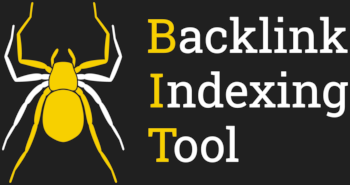
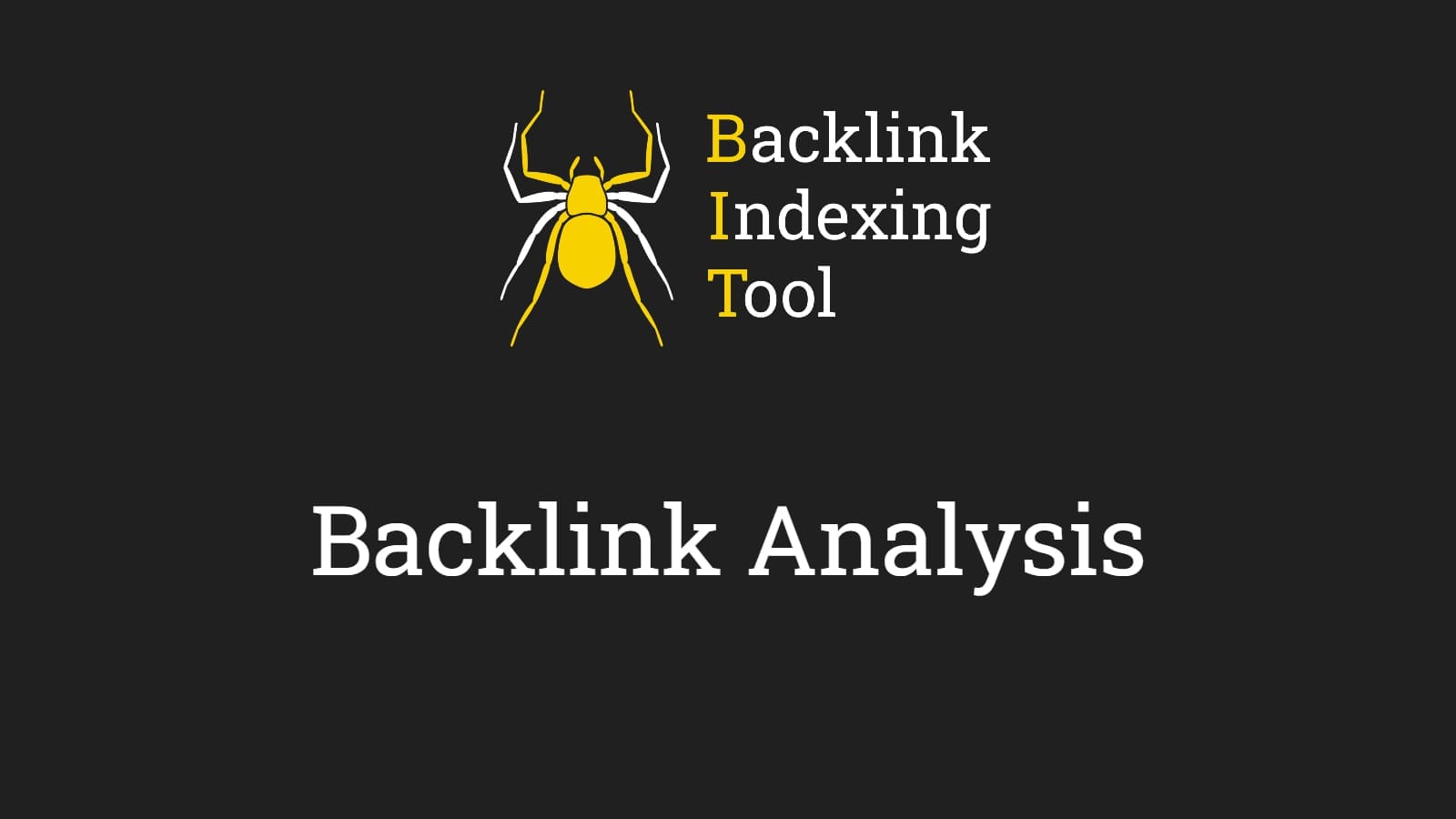
Leave a Reply